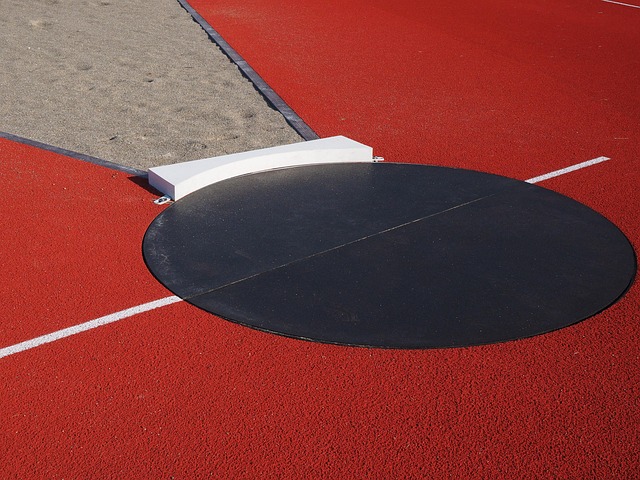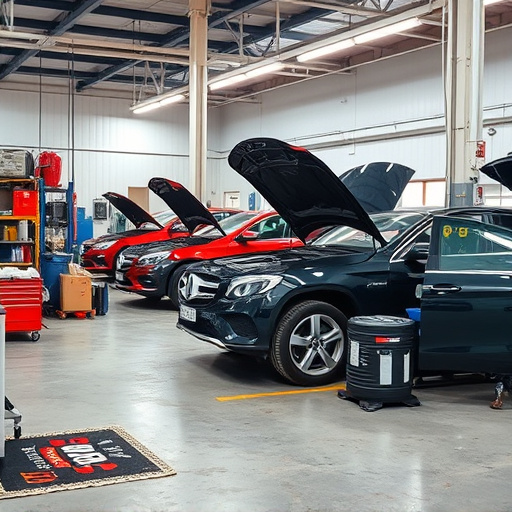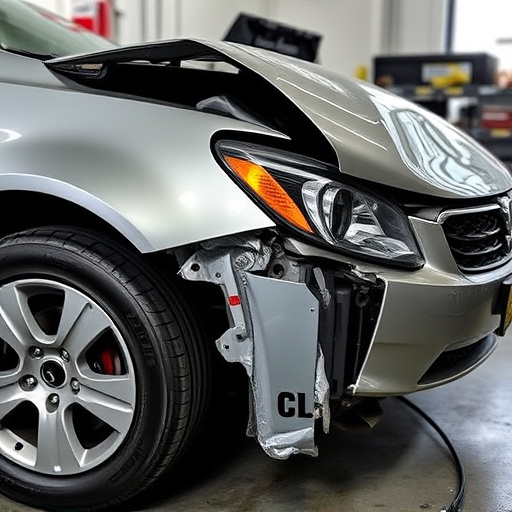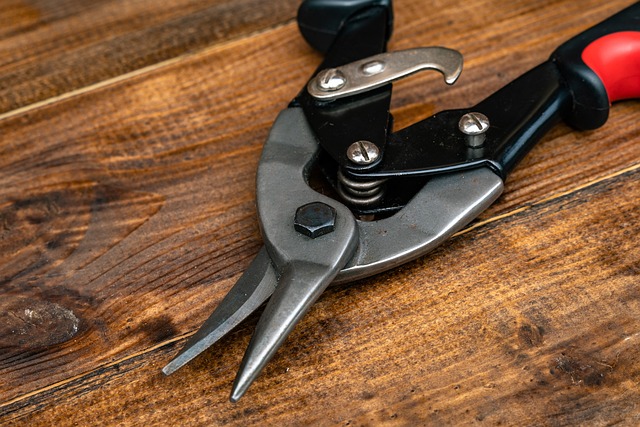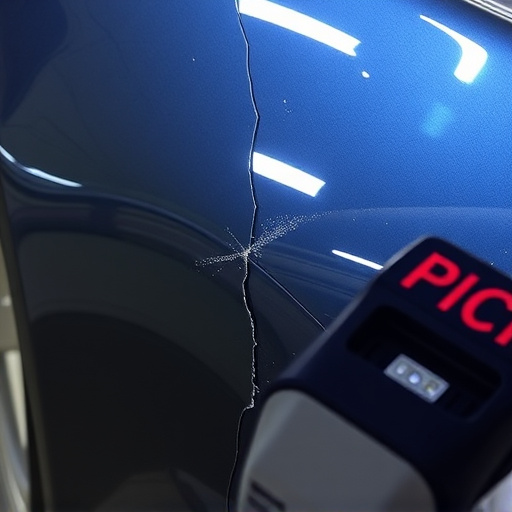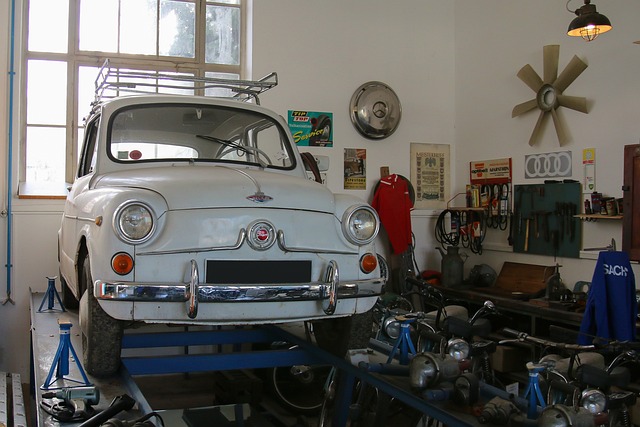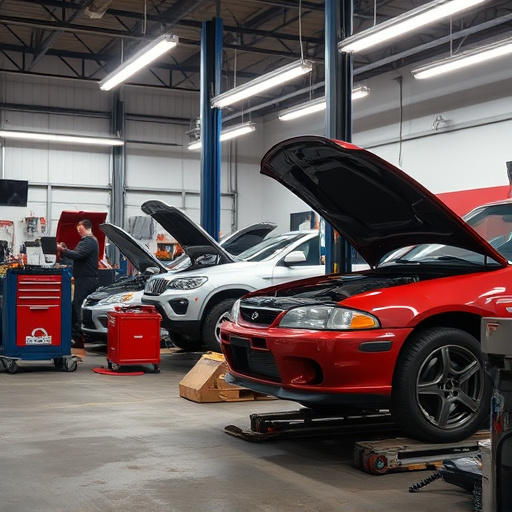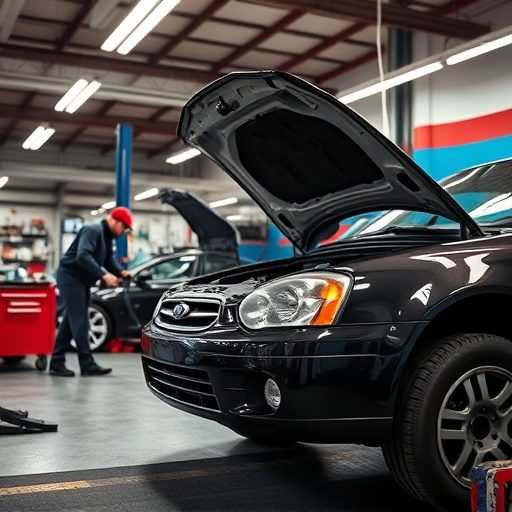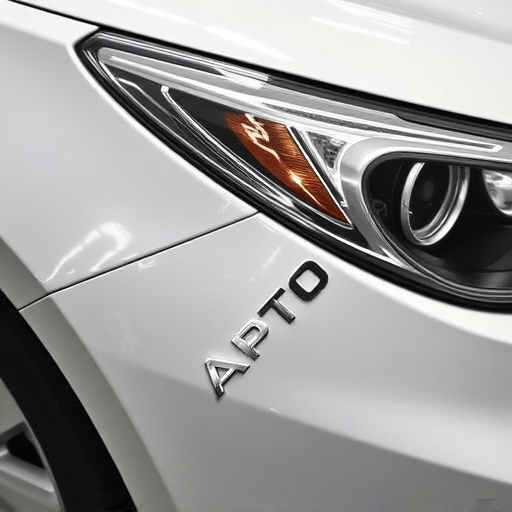Aluminum and carbon fiber components in modern vehicles offer performance benefits but pose unique challenges for insurance repairs. Aluminum's corrosion resistance and lower density complicate minor damages, requiring specialized equipment and knowledge, leading to potentially higher costs. Carbon fiber, though pricier upfront, provides exceptional strength and stiffness, allowing precise restoration of damaged areas by skilled technicians. Auto body shops must consider these material differences when estimating repair expenses to ensure customer satisfaction.
Aluminum body components have revolutionized automotive design, offering lightweight strength and improved fuel efficiency. However, their increasing prevalence has implications for insurance repair costs. This article delves into the unique challenges posed by aluminum in collision repair, comparing it to carbon fiber components. We explore the financial impact on insurers, considering material differences, specialized repair techniques, and market trends. Understanding these dynamics is crucial for both insurers and policyholders in today’s competitive automotive landscape, particularly with the rise of advanced materials like carbon fiber.
- Understanding Aluminum Body Components: Advantages and Disadvantages in Repair
- The Financial Impact: How Aluminum Affects Insurance Repair Costs
- Carbon Fiber vs. Aluminum: Comparing Repair Expenses and Efficiency
Understanding Aluminum Body Components: Advantages and Disadvantages in Repair
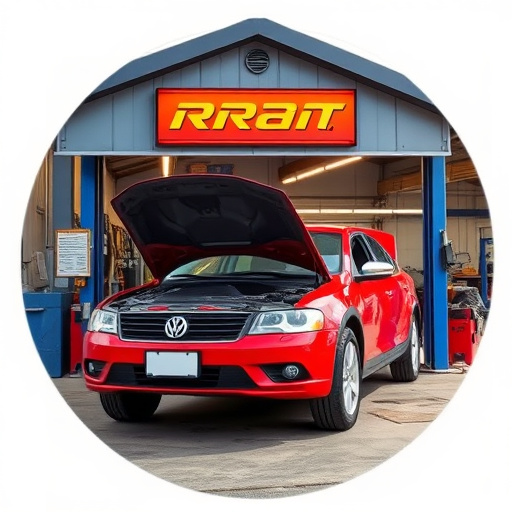
Aluminum body components have gained popularity in the automotive industry for their lightweight nature and durability. These advantages are particularly appealing to manufacturers aiming to enhance fuel efficiency and overall vehicle performance. However, when it comes to repair and insurance claims, aluminum presents unique challenges compared to traditional materials like steel. In a collision repair shop, working with aluminum requires specialized knowledge and equipment due to its distinct properties.
One significant advantage of aluminum body components is their resistance to corrosion, which can be beneficial in maintaining vehicle aesthetics over time. Yet, this material’s lower density means it may not withstand impact as effectively as steel, leading to more complex repair processes. For instance, when a vehicle with aluminum bodies incurs damage, auto body painting and panel replacement might be more involved. Moreover, the precision required for installation is higher, as even minor misalignments can affect the structural integrity of the vehicle. Efficient tire services and careful alignment are crucial to ensuring these repairs are carried out correctly, ultimately impacting insurance repair costs.
The Financial Impact: How Aluminum Affects Insurance Repair Costs
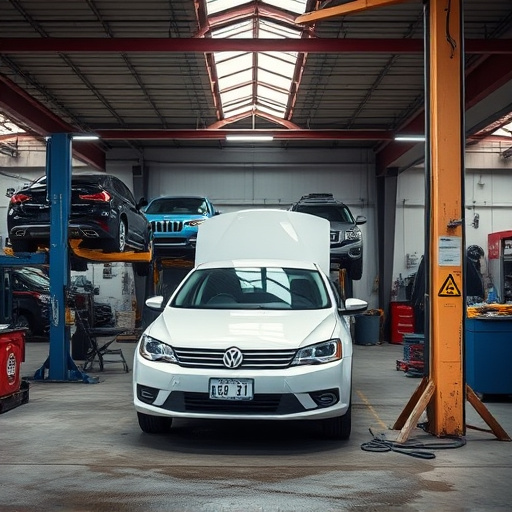
Aluminum body components have a significant financial impact on insurance repair costs. When a vehicle equipped with aluminum parts experiences a collision, the repair process can be more complex and expensive compared to vehicles with traditional steel bodies. This is primarily due to the unique properties of aluminum, such as its lower density and higher strength-to-weight ratio, which necessitate specialized knowledge and equipment in car body repair shops.
The growing popularity of carbon fiber components, often found in high-end vehicles, further complicates matters. While these materials offer exceptional strength and lightweight benefits, they also introduce different challenges during vehicle collision repair. Insurance companies factor in these complexities when calculating repair costs, leading to potentially higher out-of-pocket expenses for policyholders. As a result, drivers with aluminum or carbon fiber-equipped vehicles should be prepared for more extensive and costly repairs in the event of an accident, as seen in many vehicle body shops today.
Carbon Fiber vs. Aluminum: Comparing Repair Expenses and Efficiency
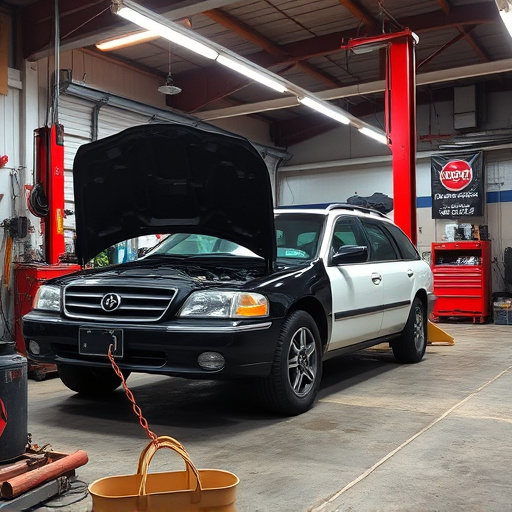
When comparing materials for automotive body components, carbon fiber and aluminum are often at the forefront due to their lightweight properties and strength. However, when it comes to insurance repair costs, these two materials present distinct advantages and challenges. Carbon fiber components, known for their exceptional stiffness and low weight, generally command higher upfront costs compared to aluminum. This is largely attributed to the specialized manufacturing processes required for carbon fiber, making it a premium choice in the auto industry.
In terms of repair efficiency, both materials offer unique benefits. Carbon fiber repairs often involve intricate work due to its complex weave patterns, but skilled technicians can restore damaged areas with precision. On the other hand, aluminum is more forgiving during bumper repair or larger panel replacements, as it can be bent and formed without compromising structural integrity. This makes aluminum a cost-effective choice for insurance repairs, where efficiency and quick turnaround times are crucial to minimize vehicle downtime. In the auto body shop, these considerations play a significant role in estimating repair expenses and ensuring customer satisfaction with car repair services.
Aluminum body components have significantly impacted the automotive industry, offering lightweight yet durable solutions. However, when it comes to insurance repair costs, these advantages are not without considerations. The article has explored how aluminum’s unique properties influence repair processes and expenses, particularly when compared to carbon fiber components. Understanding these dynamics is crucial for both insurers and policyholders, as the choice of materials can significantly affect repair budgets. By examining the financial implications and repair efficiencies, we gain insights into the evolving landscape of auto insurance and material technology.
